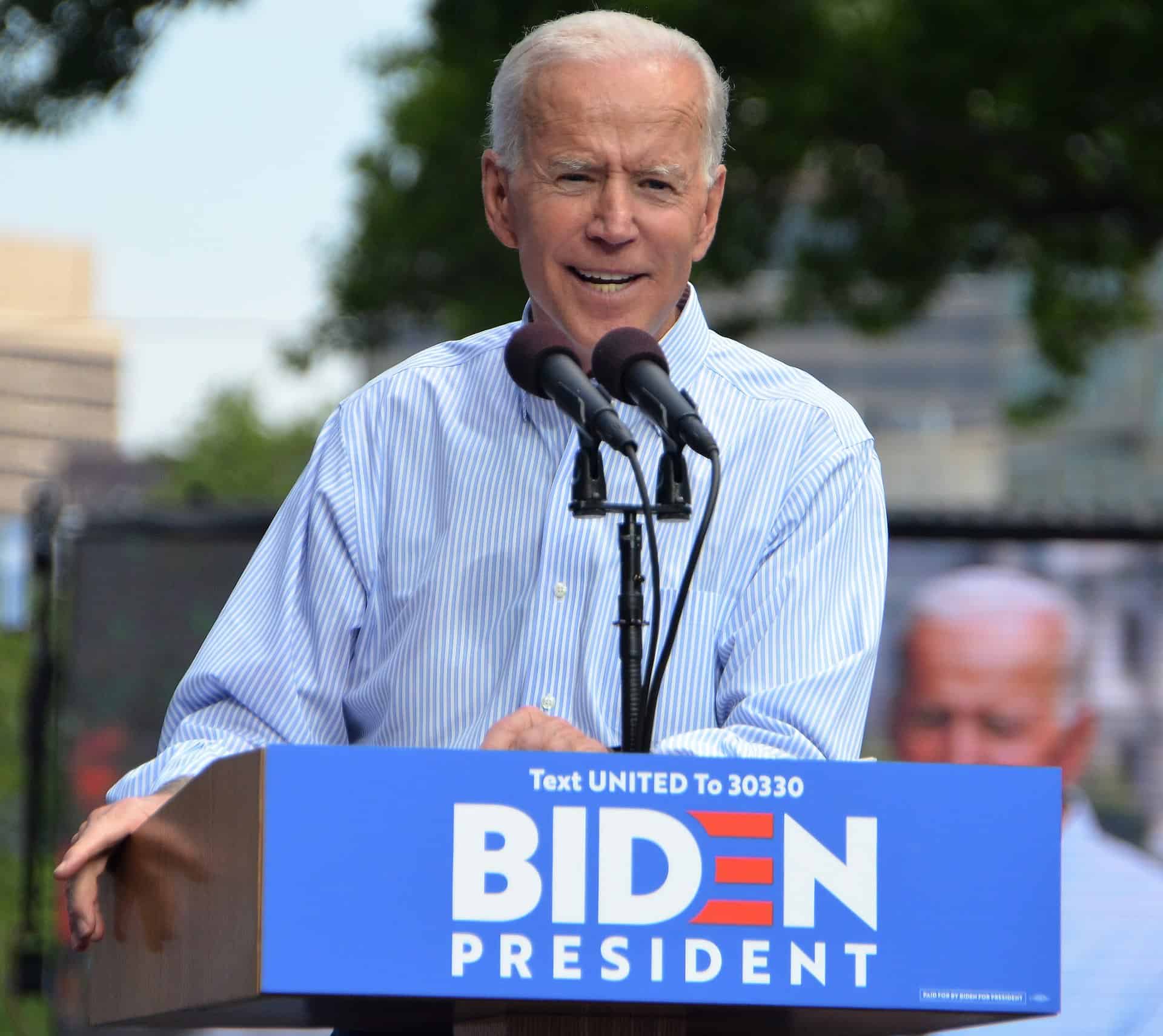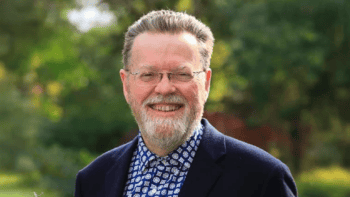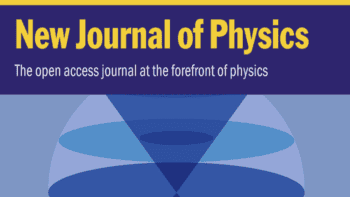From dealing with the COVID-19 pandemic to stimulating industries of the future, science policy has played a larger role than usual in next week’s US election, as Peter Gwynne reports

Next week’s presidential election between the incumbent Republican Donald Trump and his Democratic rival Joe Biden presents voters with a stark choice between two candidates with strikingly different views of national and international policy. With issues such as how to halt the spread of COVID-19 and how to resuscitate an economy battered by the pandemic, science has played a key role in an election that sees a strongly divided electorate head to the polls on 3 November.
In a report released in March just as the pandemic was starting to bite, the American Institute of Physics (AIP) noted that the pandemic-related shutdown had already “stalled research, curtailed the operation of major facilities and international travel, and negatively impacted students and early career scientists”. AIP chief executive Michael Moloney noted in June that without swift action to rebuild and renew, the US was in “peril of losing the resilient and robust physical sciences enterprise we need to remain healthy, innovative and prosperous”.
Opponents of Trump have accused his administration of being “anti-science” – a concern that has increased during the pandemic. Critics highlight his failure to accept medical authorities’ recommendations for lessening the impact of COVID-19 and his insistence on promoting unproven remedies. They also point to Trump’s dismissal of anthropogenic climate change as a hoax – following recent devastating wildfires in California he claimed that “it’ll start getting cooler” – and his administration’s consistent efforts to cut funding for science in its annual budget proposals.
So far, however, Congress has refused to agree to those reductions. “Had they gone along with the requested cuts, funding for science would be down by 50%,” says Neal Lane, a physicist and former presidential science adviser who is now a senior fellow in science and technology policy at Rice University. “I’ve seen no signs from Trump’s side that he has much interest in science.”
The difference in this election is the number of cases in which the two parties differ on the merits of science itself – as if science is on the ballot, in a way
Criticism of the Trump administration’s science policy started in its earliest days when it pulled the US out of the Paris climate agreement. Environmentalists were further incensed by the relaxation of environmental protection regulations created under Democratic president Barack Obama. Another problem is the current administration’s perceived suspicion of “experts”, exemplified by a failed effort to ban academic scientists from the Environmental Protection Agency’s scientific advisory panels. The Washington Post reported earlier this year that 20% of high-level science positions in the civil service are currently vacant.
International policy during Trump’s tenure has also caused some angst in the US science community. “The US has always been a leader in international collaboration,” says Philip Bucksbaum, chair of natural science at Stanford University and current president of the American Physical Society (APS). “But that’s begun to change because of disagreements with China.”
Bucksbaum points to several high-profile arrests of scientists accused of risking US national security, while in September the Department of Homeland Security revoked the US visas of more than 1000 Chinese students and researchers, citing security risks. “That sends a chilling message,” says Busksbaum, who emphasizes that his comments represent his personal views and not those of the APS. Such moves also have a potential impact on US universities given that international students make up about half of graduate students in the US – and a third of them come from China.
“Science affects everything the government does,” adds Bucksbaum. “The difference in this election is the number of cases at the national level in which the two parties differ on the merits of science itself – it feels as if science is on the ballot, in a way.”
A “shameful” moment
In early September 81 US science Nobel laureates, including 26 from physics, issued an open letter endorsing Biden – who was vice-president under Barack Obama from 2009 to 2017. “At no time in our nation’s history has there been a greater need for our leaders to appreciate the value of science in formulating public policy,” the laureates argued. “During his long record of public service, Joe Biden has consistently demonstrated his willingness to listen to experts, his understanding of the value of international collaboration in research, and his respect for the contribution that immigrants make to the intellectual life of our country.”
The letter was organized by Democratic Representative Bill Foster of Illinois, the only physicist currently in Congress, who said it would be an “important” development for the Biden campaign. Foster says that “a core group” of laureates decided which issues to raise in the letter, but when he started calling the laureates to back the initiative, “it was like pushing at an open door…there was a lot of enthusiasm because of the difference [the laureates] perceive in the scientific understanding” between the two candidates.
The Nobel laureates’ Democratic leanings are nothing new: similar letters were penned in 2016 to support Hillary Clinton and in 2008 for Barack Obama. More unusual, however, was a strongly worded editorial in Science in September by its editor-in-chief, the chemist Holden Thorp. Entitled “Trump lied about science”, Thorp claimed that the president’s remarks in February to Washington Post journalist Bob Woodward, in which he sought to downplay the severity of COVID-19, meant that “a US president ha[d] deliberately lied about science in a way that was imminently dangerous to human health and directly led to widespread deaths of Americans”. Thorp suggested this was “the most shameful moment in the history of US science policy”.
Meanwhile, political appointees of the Trump administration without medical backgrounds have been accused of meddling with health statistics and announcements of potential treatments for COVID-19. In late August, Food and Drug Administration director Stephen Hahn apologised for the administration’s release of statistics that greatly overstated the benefit of blood plasma in treating COVID-19.
Lunar vision
Republican supporters of Trump respond that his administration’s policies have improved the economy – at least until the coronavirus arrived. They point to recent initiatives that created centres for artificial intelligence and quantum information science. They also note a renewed effort to send astronauts to the Moon, as a starting point for a manned mission to Mars in the 2030s, and the debut – on the administration’s watch – of the commercial SpaceX system for ferrying astronauts to the International Space Station, which marked the end of US dependence on Russia’s Soyuz spacecraft.
Trump also has his defenders in the scientific community, particularly among deniers of climate change. Will Happer, an emeritus professor of physics at Princeton University who believes that carbon dioxide benefits living things, has served as an official and unofficial adviser to the president on climate change. Howard Hayden, an emeritus physicist at the University of Connecticut associated with the Heartland Institute, which promotes “free market solutions to social and economic problems”, says that Trump “has never been opposed” to science. “I don’t think Joe Biden has any particular credentials in the science community,” he adds. “I suspect the [Nobel laureates’ open] letter is more animated by animus for Trump than anything for science.”
This may be an opportunity for the scientific community to remind everyone about long-term investment in science
Neal Lane
Yet Trump’s own party has issued no science manifesto for the next four years. The administration’s annual memorandum on its R&D priorities, released in mid-August, will likely shape its future budget requests should Trump win re-election. The priorities include “industries of the future” such as artificial intelligence, quantum-information science, advanced communication networks and advanced manufacturing. The memorandum also foresees the creation of “Industries of the Future Institutes” that would house up to “a few thousand” researchers carrying out interdisciplinary R&D.
The Biden campaign’s manifesto, meanwhile, calls for $300bn on R&D over the next four years and $400bn over a decade to make “the largest-ever investment in clean energy research”. The plan targets a zero-emissions US by 2050 via R&D, investments in infrastructure, regulations on emissions and retraining of workers in traditional energy industries. The $300bn would serve “to sharpen Americans’ competitive edge in new industries [such as] battery technology, artificial intelligence, biotechnology and clean energy”.
Whoever wins the next election will have to spend extra on science, Lane believes. “Funding has been trending downward for the last decade or so,” he says. “What you need in science and R&D generally is sustainable, steady growth of government funding.” Foster agrees, adding that he sees the coronavirus pandemic as a factor in refocusing voters on the importance of science. “The only reason we’re in a position to develop vaccines rapidly is decades of scientific research,” he says. “This may be an opportunity for the scientific community to remind everyone about long-term investment in science.”



